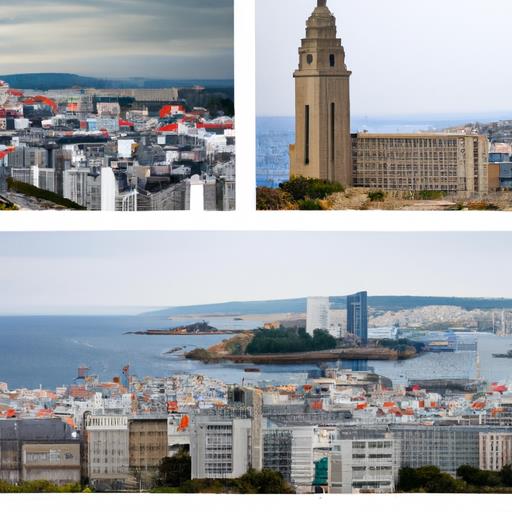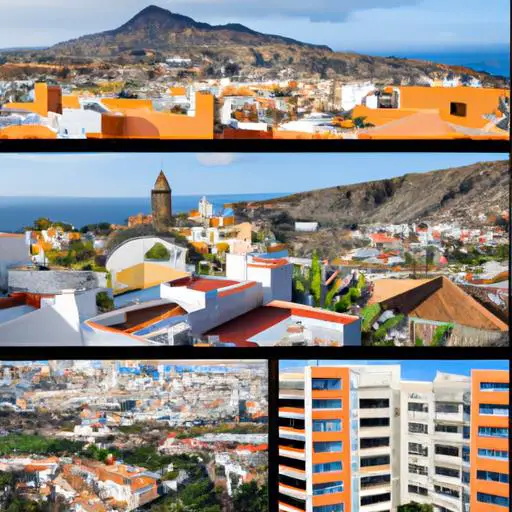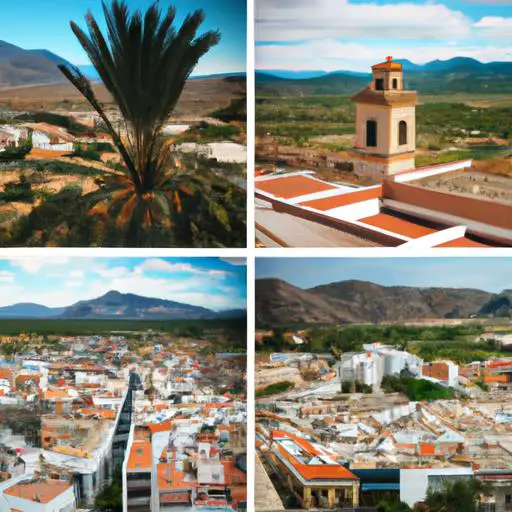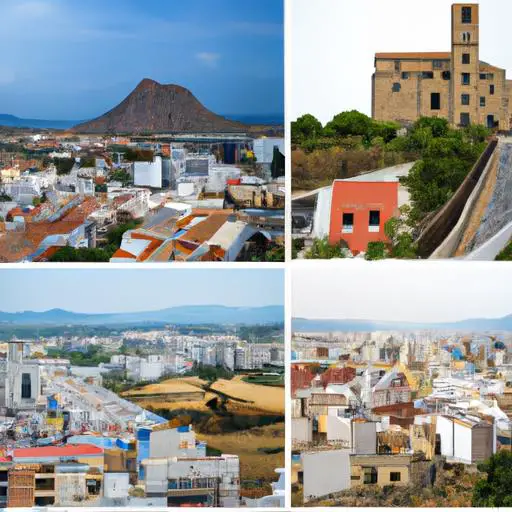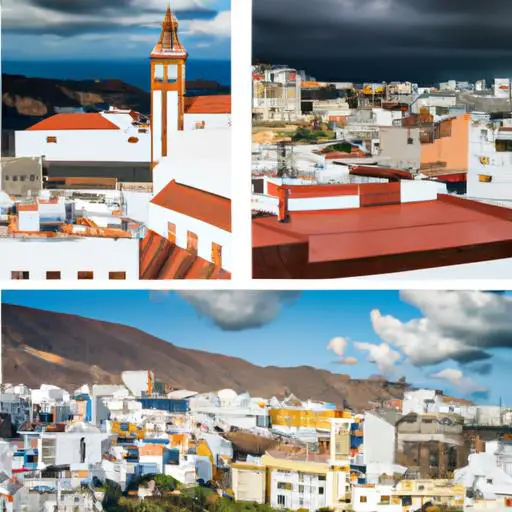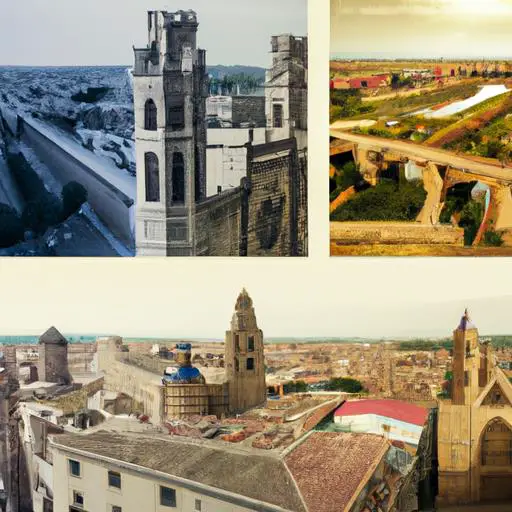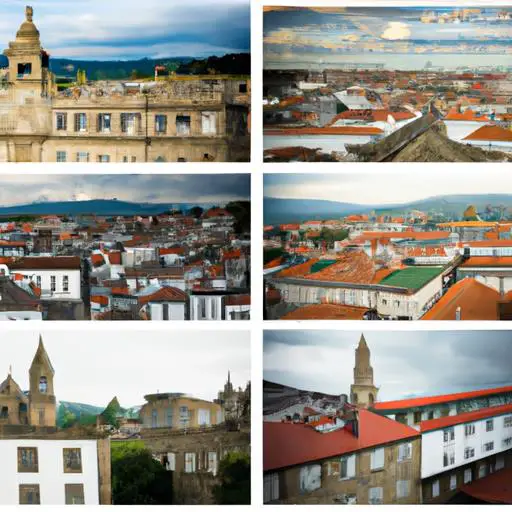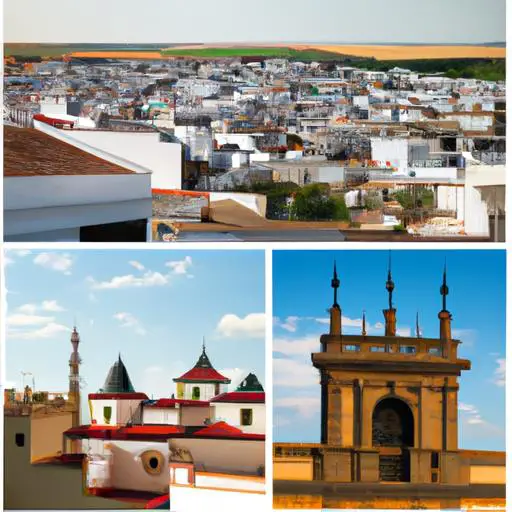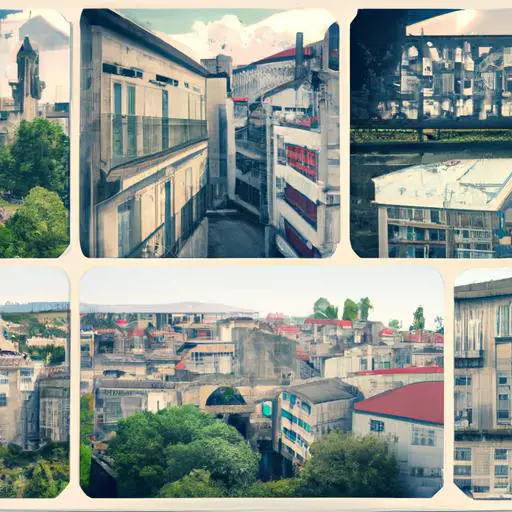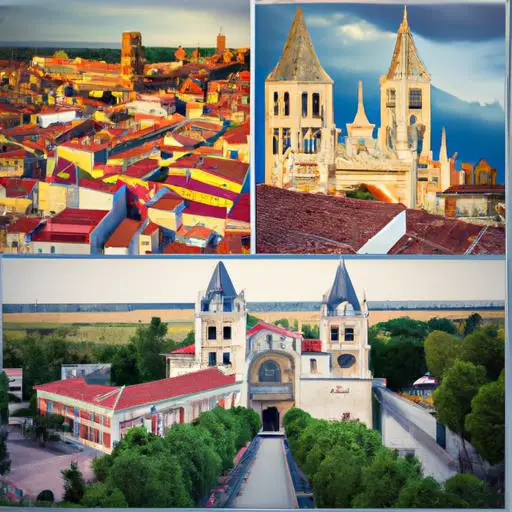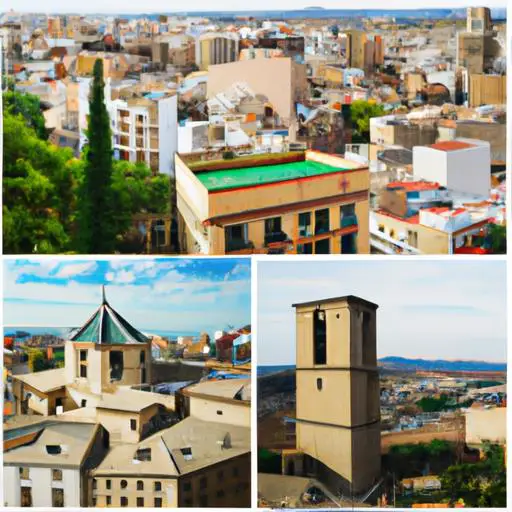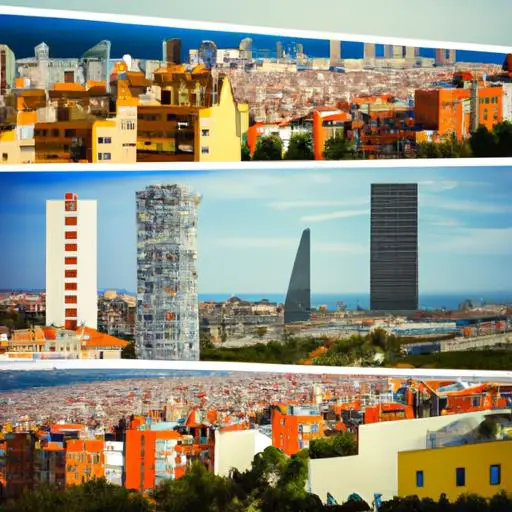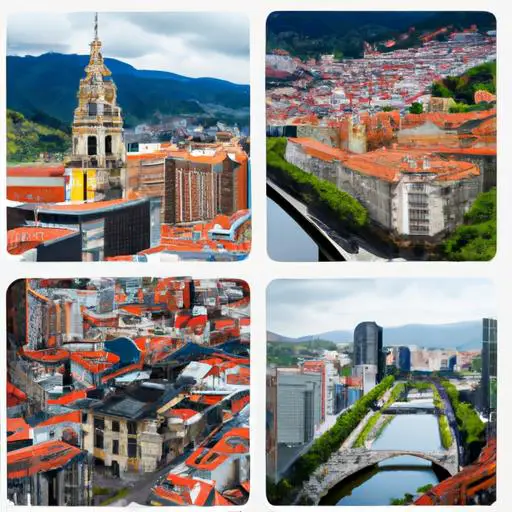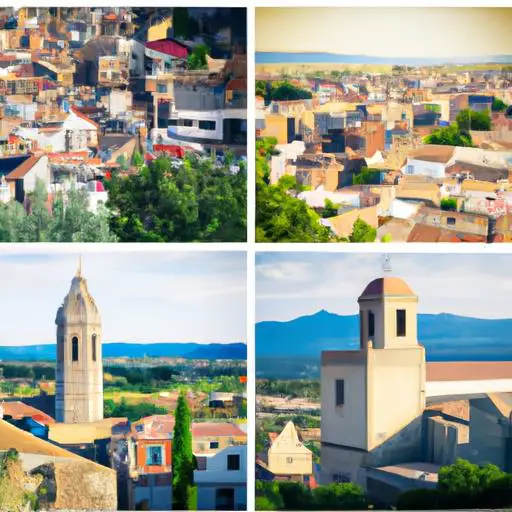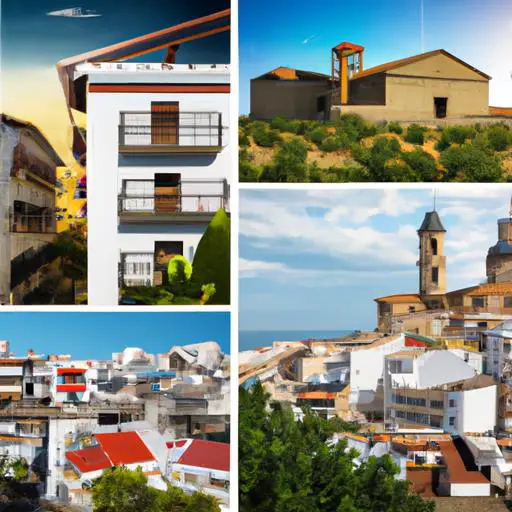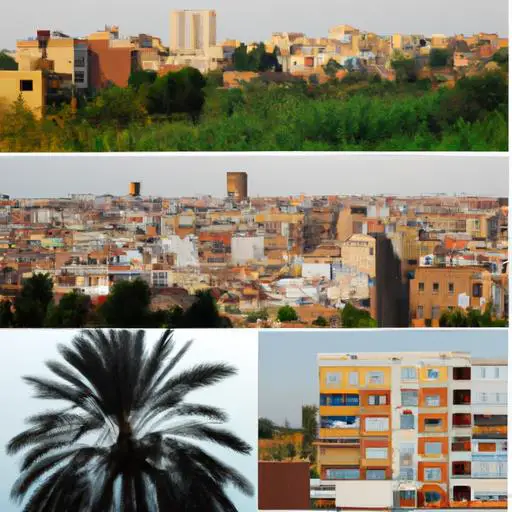History & Information About Historic City of Toledo (UNESCO World Heritage), Spain
Toledo, the historic city of Spain, located in the central part of the country on the banks of the Tagus River, is a true gem that has stood the test of time. With a rich and fascinating history dating back to the Roman Empire, this UNESCO World Heritage site offers visitors a glimpse into the past and a chance to explore its magnificent architectural wonders.
Once known as Toletum during the Roman era, Toledo has witnessed the rule of different civilizations, including the Romans, Visigoths, Moors, and Christians. This historical significance is evident in the city's impressive architectural styles that blend various influences throughout the centuries.
Toledo rose to prominence during the Visigothic period, becoming the capital of the Visigothic Kingdom in the 6th century. The city's strategic location made it an important military stronghold, protecting Spain from invading forces. However, it was the arrival of the Moors in the 8th century that brought significant changes and cultural influences to Toledo.
Under Muslim rule, Toledo, also known as 'Tulaytulah,' became a center of commerce, education, and Islamic culture. The Moors left their mark on the city with the construction of several mosques and fortified walls, which can still be seen today. Toledo thrived under the Moors for several centuries until it was recaptured by Christian forces in the 11th century during the Spanish Reconquista.
The Christian period marked a new chapter in Toledo's history, where religious diversity and cultural exchange flourished. Christian rulers, most notably King Alfonso VI, encouraged peaceful coexistence between Christians, Jews, and Muslims, earning Toledo the reputation of being a 'City of Three Cultures.' This unique blend of religious and cultural diversity resulted in the construction of magnificent religious structures, such as the Toledo Cathedral and the Synagogue of Santa María la Blanca.
One of the most recognizable landmarks of Toledo is its majestic Alcázar, a fortress that has witnessed centuries of conflicts and now serves as the headquarters of the Spanish Army Museum. The Alcázar offers panoramic views of the city and showcases military artifacts from different eras.
When exploring Toledo, it's impossible to ignore the city's renowned architectural style known as 'Mudéjar.' This distinctive style emerged during the transition from the Moorish to the Christian rule and combines elements of both cultures. Mudéjar buildings, such as the El Transito Synagogue and the Monastery of San Juan de los Reyes, display intricate geometric patterns and ornate decorations.
Toledo's status as a UNESCO World Heritage site is well-deserved, as it preserves its cultural and historical significance for future generations. The city welcomes thousands of tourists each year who come to marvel at its stunning architecture, wander through its narrow winding streets, and immerse themselves in its rich history.
In addition to its architectural wonders, Toledo is also famous for its traditional craftsmanship, especially in the production of steel swords and marzipan sweets. Visitors can explore the city's artisan workshops and indulge in culinary delights that have been passed down through generations.
Whether you are a history enthusiast, an architecture lover, or simply seeking a unique cultural experience, Toledo has something to offer to everyone. Its splendid monuments, captivating history, and enchanting atmosphere make it a must-visit destination. Prepare to be transported back in time as you explore the remarkable Historic City of Toledo.
Read more
Interesting Facts About Historic of Toledo (UNESCO World Heritage)
Toledo is an incredibly fascinating city with a rich and unique history. Here are some interesting lesser-known facts about this beautiful UNESCO World Heritage site in Spain:
- Cultural and Religious Crossroads: Toledo has been a melting pot of different cultures and religions throughout its history. It was first a Roman settlement, then a Visigothic capital, and later became a significant center for Muslims, Jews, and Christians. This diversity has left a remarkable heritage visible in its architecture, traditions, and even its cuisine.
- Holy Toldeo: Known as the "City of Three Cultures," Toledo harmoniously brought together Christians, Muslims, and Jews for centuries. This coexistence is evident in the city's iconic landmarks, such as the Toledo Cathedral (Catedral Primada Santa María de Toledo) and the Synagogue of Santa María la Blanca. These structures showcase the architectural influences of these different faiths.
- Extraordinary Architecture: Toledo is renowned for its stunning architecture reflecting various historical periods. From its impressive medieval city walls, gates, and towers to the Mudejar-style structures, Gothic and Renaissance buildings, and the famous Alcázar fortress, the city boasts a diverse range of architectural treasures.
- Sword-Making Capital: For centuries, Toledo has been famous for its exceptional sword-making craftsmanship. The city's swords, known as "Toledo swords" or "espadas toledanas," were highly sought after by knights and warriors during the Middle Ages. The steel used in these swords was said to be of superior quality, making them highly prized weapons.
- Birthplace of El Greco: One of Toledo's most renowned sons is the influential painter Doménikos Theotokópoulos, better known as El Greco. This famous artist, born in Crete, settled in Toledo during the 16th century and created numerous masterpieces there. Many of his works can still be admired in various churches and museums across the city.
- Impact on Spanish Language: Toledo played a significant role in the development and standardization of the Spanish language. In the 15th century, the city became a center for scholars and intellectuals, attracting writers and grammarians who contributed to the establishment of the Spanish language as we know it today.
- The Buried City: Beneath the streets of Toledo lies an ancient Roman city. The archaeological site known as "Ciudad subterránea de la Nunciatura" reveals the remains of Roman baths, houses, and various structures from the 1st and 2nd centuries. It offers an intriguing glimpse into the city's early history.
- Alluring Mazapán: Toledo is famous for its delicious marzipan, a traditional sweet made from almonds and sugar. The recipe for this delectable treat has been preserved for centuries, and visitors can find authentic marzipan creations in the many traditional shops scattered across the city.
- Award-Winning Toledo Knives: Alongside its sword-making heritage, Toledo is also known for its exceptional knives. The city's knives, known as "cuchillos toledanos," are highly regarded for their craftsmanship and precision. The skillful artisans who produce these knives have been recognized for their artistry by prestigious awards.
- The Winding Streets: Exploring Toledo's labyrinthine streets is like taking a trip back in time. The narrow, winding alleys and staircases intertwine throughout the city, leading to hidden nooks, charming squares, and breathtaking viewpoints. Getting lost in Toledo's historic streets is an adventure in itself.
Toledo truly encapsulates the essence of Spanish history and artistry. Its cultural diversity, architectural marvels, and centuries-old traditions make it a captivating UNESCO World Heritage site that continues to fascinate visitors from around the globe.
Same cateogry post
Travel Guide For Visiting Historic City of Toledo (UNESCO World Heritage), Spain
Toledo, a UNESCO World Heritage site located in Spain, is a historic city that boasts a rich cultural heritage. Known as the "city of three cultures," Toledo is renowned for its historical significance, stunning architecture, and vibrant atmosphere. If you're planning a trip to this iconic destination, here's a detailed travel guide to help you make the most of your visit.
Getting There
Toledo is conveniently situated just 70 kilometers south of Madrid, making it easily accessible by various means of transportation. The most common way to reach Toledo is by train, with regular services available from Madrid's Atocha station. The journey takes about 30 minutes, providing you with a hassle-free option to reach this majestic city.
Exploring the City
Once you arrive in Toledo, get ready to immerse yourself in its captivating history. Start your journey at the Plaza Zocodover, the main square of the city, where you can soak up the lively atmosphere and explore the nearby streets full of shops and restaurants. From there, make your way to the legendary Toledo Cathedral, a masterpiece of Gothic architecture dating back to the 13th century. Its towering structure and intricate details are sure to leave you in awe.
Another must-visit landmark is the Alcázar of Toledo, a fortress situated at the highest point of the city. This impressive structure offers breathtaking views of the entire Toledo skyline and houses the Army Museum, displaying a collection of historical artifacts. Don't miss the opportunity to stroll along the winding streets of the Jewish Quarter, known as the Judería, and admire the charming medieval houses and synagogues.
Local Cuisine
Toledo is renowned for its gastronomy, combining traditional Spanish flavors with unique regional dishes. Indulge in delicious local specialties such as the famous Toledo marzipan, a sweet almond-based delicacy. Don't forget to savor the succulent partridge, a popular game bird in the area, and the tantalizing Manchego cheese, produced in the nearby La Mancha region.
Shopping Experience
Toledo offers a wide range of shopping options, making it a paradise for souvenir hunters. Explore the narrow streets to find exquisite handmade crafts, including ceramics, swords, and damascene jewelry. These traditional crafts carry the essence of Toledo's cultural heritage and are perfect mementos to remember your visit.
Conclusion
Visiting the historic city of Toledo is like stepping back in time. With its fascinating architecture, rich history, and unparalleled cultural experiences, this UNESCO World Heritage site should definitely be on your travel itinerary when visiting Spain. From exploring its iconic landmarks to indulging in local culinary delights and shopping for unique souvenirs, Toledo promises an unforgettable journey that will leave you with lasting memories.
Same cateogry post
FAQs about the Historic City of Toledo (UNESCO World Heritage), Spain
What makes the Historic City of Toledo special?
The Historic City of Toledo in Spain is considered a UNESCO World Heritage site due to its immense cultural and historical significance. It was once the capital of Spain and is known for its rich medieval history, stunning architecture, and diverse cultural heritage.
What are the main attractions in Toledo?
Toledo offers a plethora of attractions for visitors to explore. Some of the main ones include:
- The Toledo Cathedral: Known as the "Primate Cathedral of Saint Mary of Toledo," it is a breathtaking example of Gothic architecture.
- Alcázar of Toledo: This fortified palace served as a military barracks, royal residence, and now houses the Army Museum.
- Toledo's Synagogues: The city is known for its historic synagogues, including Santa María La Blanca and El Tránsito Synagogue.
- The Monastery of San Juan de los Reyes: This monastery represents a fine example of Isabelline Gothic architecture.
- The Toledo City Walls: Explore the ancient city walls and gates, such as the Puerta de Bisagra and Puerta del Sol.
Is Toledo a safe city to visit?
Yes, Toledo is generally considered a safe city for tourists. However, like any other popular tourist destination, it's advised to take basic precautions such as being aware of your surroundings, keeping an eye on your belongings, and following any local guidelines or recommendations.
What is the best time to visit Toledo?
The best time to visit Toledo is during spring (April to June) or autumn (September to November) when the weather is mild and pleasant. Summer can be hot, with high temperatures, while winter can be chilly and rainy.
Can you explore Toledo in a day?
While it is possible to visit Toledo in a day, it is highly recommended to spend at least a couple of days to fully experience and appreciate its historical and cultural wonders. A day trip allows you to visit the main attractions, but staying longer lets you delve deeper into its fascinating heritage.
Is it worth staying overnight in Toledo?
Absolutely! Staying overnight in Toledo offers a unique experience. Once the day-trippers have left, you can explore the city's enchanting streets and enjoy the atmospheric ambiance. There are also delightful accommodations and restaurants where you can savor the local cuisine.
How can I reach Toledo from Madrid?
Toledo is conveniently located near Madrid, making it easily accessible. You can reach Toledo from Madrid by train, bus, or car. The high-speed train (AVE) is the quickest option, taking around 30 minutes, while buses take approximately one hour. Driving by car takes around 1 hour, depending on the traffic.
Read more interesting post

